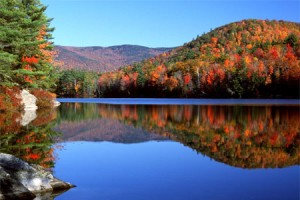 New Hampshire Population 2013
New Hampshire Population 2013
The United States Census Bureau estimates that the population of New Hampshire in 2013 was 1,320,718, which is ranked the 42nd largest population in the United States. This estimate shows a 0.3% increase since the last census in 2010, also conducted by the United States Census Bureau. The population density of the state is 147 people per square mile, ranked 21st largest density in the United States.
New Hampshire Population Projections
By the year 2015, the population is expected to reach approximately 1.42 million people, which is an approximate 7.6% increase from the current population. By the year 2020, the population is expected to reach 1.47 million people, which is an approximate 11.4% increase from the current population. By the year 2025, the population is expected to reach approximately 1.52 million people, which is an approximate 15.2% increase from the current population. By the year 2030, the population is expected to reach approximately 1.565 million people, which is an approximate 18.6% increase from the current population.
New Hampshire Land Mass
The state of New Hampshire is approximately 190 miles from north to south and 70 miles from east to west with a square area of 9,351 making it the 46h largest state in the Untied States. Of the 9,351 square miles, 382 square miles are covered by water. The highest point in the state of New Hampshire is Mount Washington, which reaches 6,288 feet above sea level. The lowest point in the state is at the Atlantic Ocean, reaching sea level. The geographic center of New Hampshire is located in Belknap County, 3 miles east of Ashland. Canada on the north, Massachusetts on the south, the Atlantic Ocean on the east, Vermont, and Maine on the west border the state.
New Hampshire can be broken up into three distinct geographic land areas: Coastal Lowlands, Eastern New England Uplands, and the White Mountains. The Coastal Lowlands makes up the southeastern portion of the state at the border with the Atlantic Ocean to about fifteen miles inland. This area is made up of beaches and islands off the coast of the land. The Eastern New England Uplands make up the majority of the southern portion of the state. This area is made up of the Merrimack Valley, the Hills and Lakes Region, and the Connecticut River Valley. Lastly, the White Mountains are extended from New Hampshire. These mountains cover the northern portion of the state. The highest point in New Hampshire is in this part of the state. The most northern portion of this section is filled with forested hills.
 New Hampshire Demographics
New Hampshire Demographics
Of the approximate 1.32 million people in the state of New Hampshire, about 50.6% of the population is female, while 49,4% is male. Also, approximately 94% of the population identifies as white (including Hispanic or Latino). But, out of that 94%, only about 3% do identify as Hispanic or Latino and the other 91% as Caucasian. Those that identify as Black or African American make up only 1% of the entire population of the state of New Hampshire. The rest of the population is made up of those that identify as Asian, American Indian, Alaskan Native, or those that identify as two or more races. These other races make up only about 5% of the New Hampshire population.
New Hampshire Religion
The population of New Hampshire identifies as religious at a much lower rate than the national average. About 35% of the state population identifies as religious, compared to the national average of 49%. Out of the 35%, about 24% identify as members of the Catholic Church, making it the largest denomination in New Hampshire. All the other Christian denominations make up about 10.5% of the population. Those who identify as Jewish, Islamic, or as an Eastern religion only make up 0.5% of the population.
Visit New Hampshire
New Hampshire Economy
Historically, mainly the paper and grain mills in the state drove New Hampshire’s economy. However, once the millwork began to fall, traditional manufacturing began to take over as the economic driver of the state. Currently, Smart Manufacturing and High Technology is the largest and most vital sector of New Hampshire’s economy. This company is big on producing electronic components through the usage of high-tech equipment. Another big part of the economy is tourism. Having coastal spots, mountains, and lake destinations makes New Hampshire a great place to visit. Lastly, New Hampshire has the lowest child poverty rate in the country.
Other Resources
Find out more about the population growth of the state of New Hampshire here.


